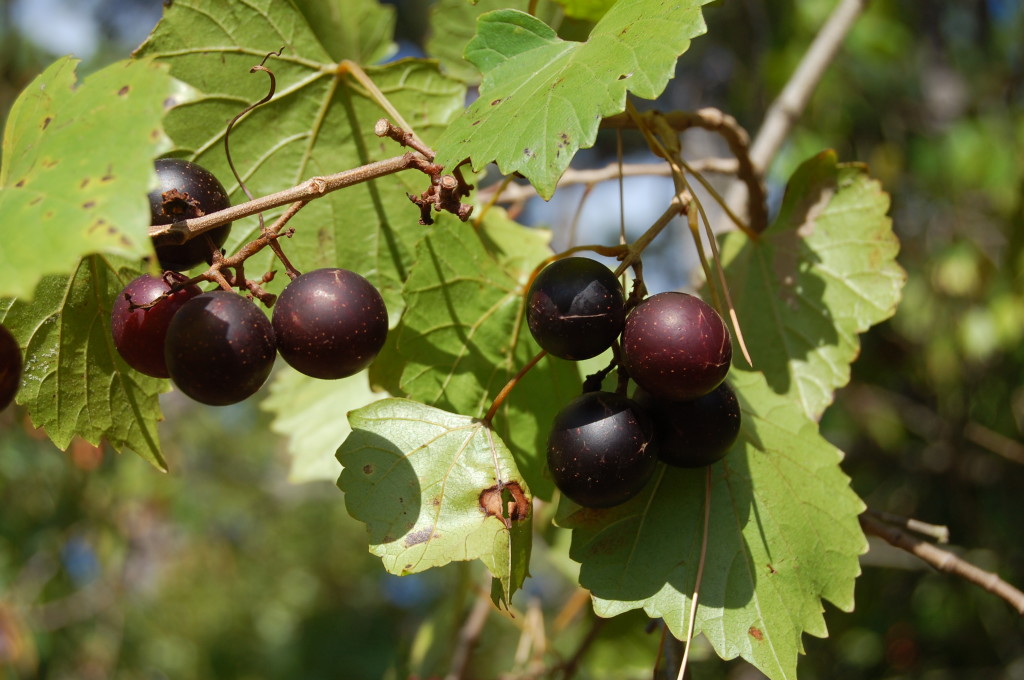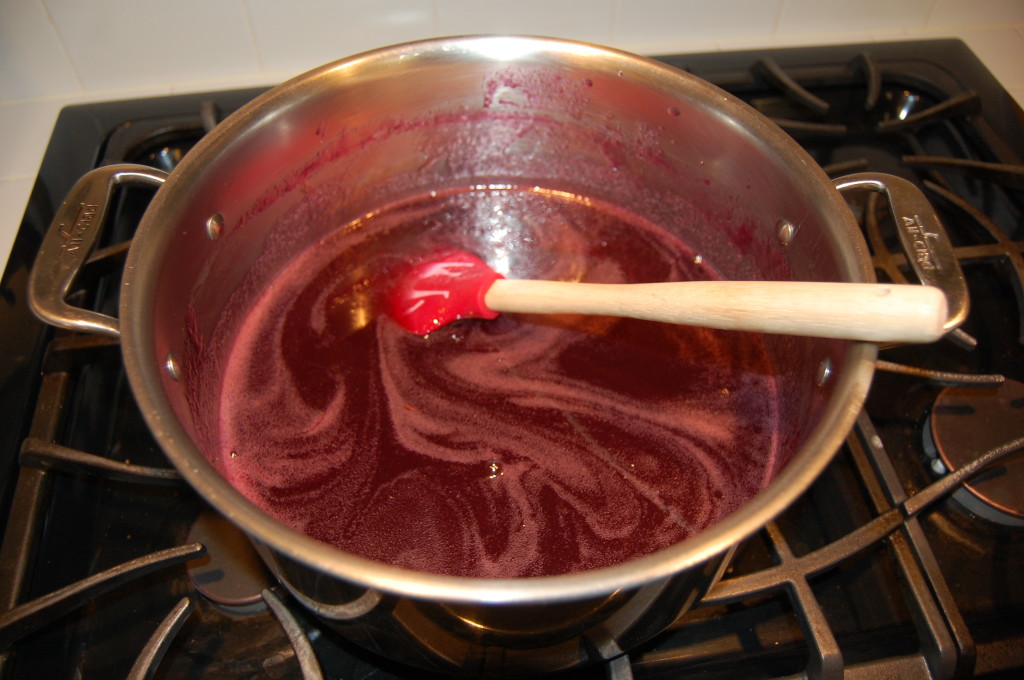A small section of our backyard was left in a “natural” state. We call it our back forty. It contains a few pine trees, a hickory nut tree, oak trees, some other scrubby trees and muscadine vines. Every few years the vines produce enough muscadines to make jelly. This was one of those years.
When I was growing up, we would go to the mountains near our home in Yell County and pick muscadines each fall. Mama would make jelly. Ann had a similar experience picking muscadines near Mountain View. In addition to making jelly, her mother would can the muscadine juice and store it in the storm cellar.
The muscadine vines grow high into the trees—too high for us to reach. I stood on a ladder to reach some, but we mostly stood on the ground.
We picked about 10 cups—more than enough to make a batch of jelly.
We measured out 8 cups of muscadines, washed them and cooked them for a while in a little water. While they were cooking, I used a potato masher to crush the muscadines.
After the muscadines had simmered for several minutes and were all crushed, I strained the juice through cheesecloth. The concoction didn’t strain very quickly or easily but after a bit of squeezing and mashing on the cheesecloth, we extracted about 5 cups of juice.
Our jelly had three main ingredients—juice, sugar, and pectin. We followed the recipe for grape jelly that came with the pectin. We added 7 cups of sugar and one packet of fruit pectin to the 5 cups of juice.
We brought the juice and pectin to a boil and added the sugar. We added a pat of butter to inhibit foaming. We boiled juice for one minute after it came to a boil again.
We sterilized the jars in a big pot of boiling water.
We ladled the hot jelly into jars and sealed the tops.
The jelly is good! It tastes just like the jelly Mama used to make.



































